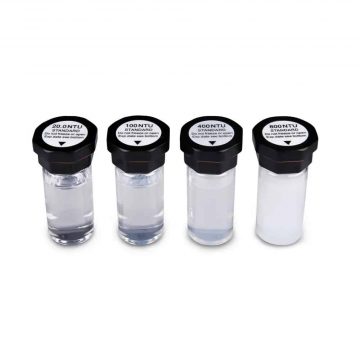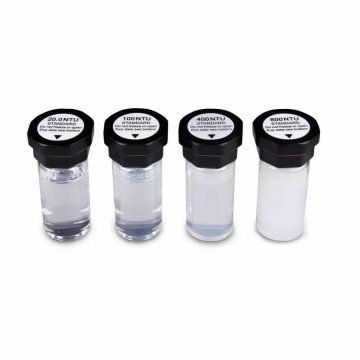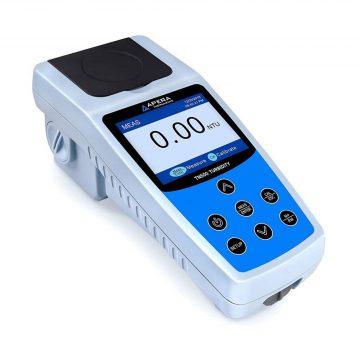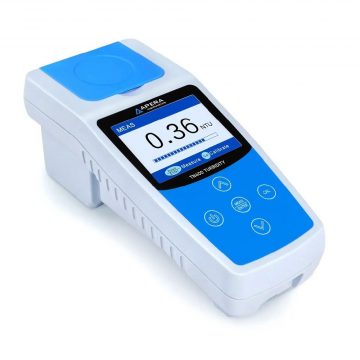The turbidity (also turbidity) of a liquid is an optical property that results from the presence of non-soluble particles of various sizes in the liquid that can refract or absorb (visible) light. These absorption or refraction effects on the particles suspended in the liquid cause it to appear milky or cloudy. In addition to the particle concentration, the turbidity also depends on the type, size and composition of the particles.
Since turbidity is an important measure of water cleanliness, testing drinking water quality is the broadest application for turbidity measurements. But turbidity measurements are also very useful for monitoring the quality of natural waters such as lakes or rivers.
To measure turbidity, a light source is usually directed at a sample and then either transmitted light or scattered light (often 90°) is measured. The light source can be a discrete wavelength laser or a continuous spectrum incandescent lamp, each of which has advantages and disadvantages.
Measurement by scattered light is called nephelometry and is the more common of the methods today, as it provides the most accurate results when measuring low turbidity. This is also how the turbidimeters of the TN series from Apera Instruments work via the scattered light method at 90°.
-
 TN420 White light turbidimeter928.20 €
TN420 White light turbidimeter928.20 € -
 TN480 Infrared Turbidimeter with GLP Data Management and USB Output1,213.80 €
TN480 Infrared Turbidimeter with GLP Data Management and USB Output1,213.80 € -
 T200-1 Standard Turbidity Solution Set (20/100/400/800 NTU) for TN400/TN480154.70 €
T200-1 Standard Turbidity Solution Set (20/100/400/800 NTU) for TN400/TN480154.70 € -
 T500-1 Standard Turbidity Solution Set (20/100/400/800 NTU) for TN500/TN420154.70 €
T500-1 Standard Turbidity Solution Set (20/100/400/800 NTU) for TN500/TN420154.70 € -
 TN500 White Light Turbidimeter with GLP Data Management and USB Output1,284.01 €
TN500 White Light Turbidimeter with GLP Data Management and USB Output1,284.01 € -
 TN400-S1 Turbidity Standard Solution Set154.70 €
TN400-S1 Turbidity Standard Solution Set154.70 € -
 TN400 Infrared Turbidimeter868.70 €
TN400 Infrared Turbidimeter868.70 €

